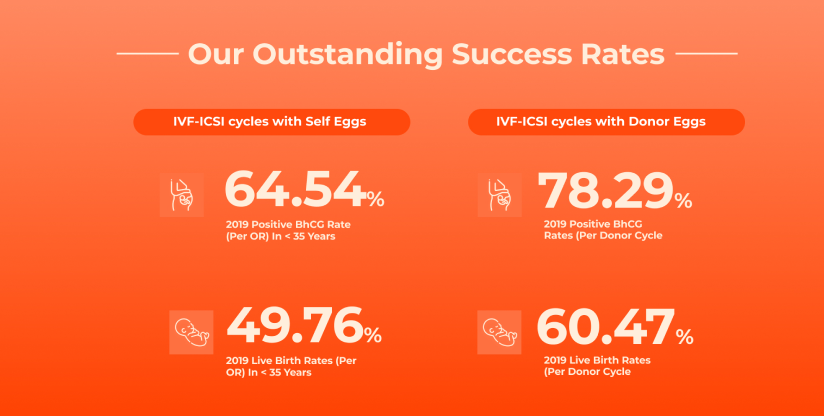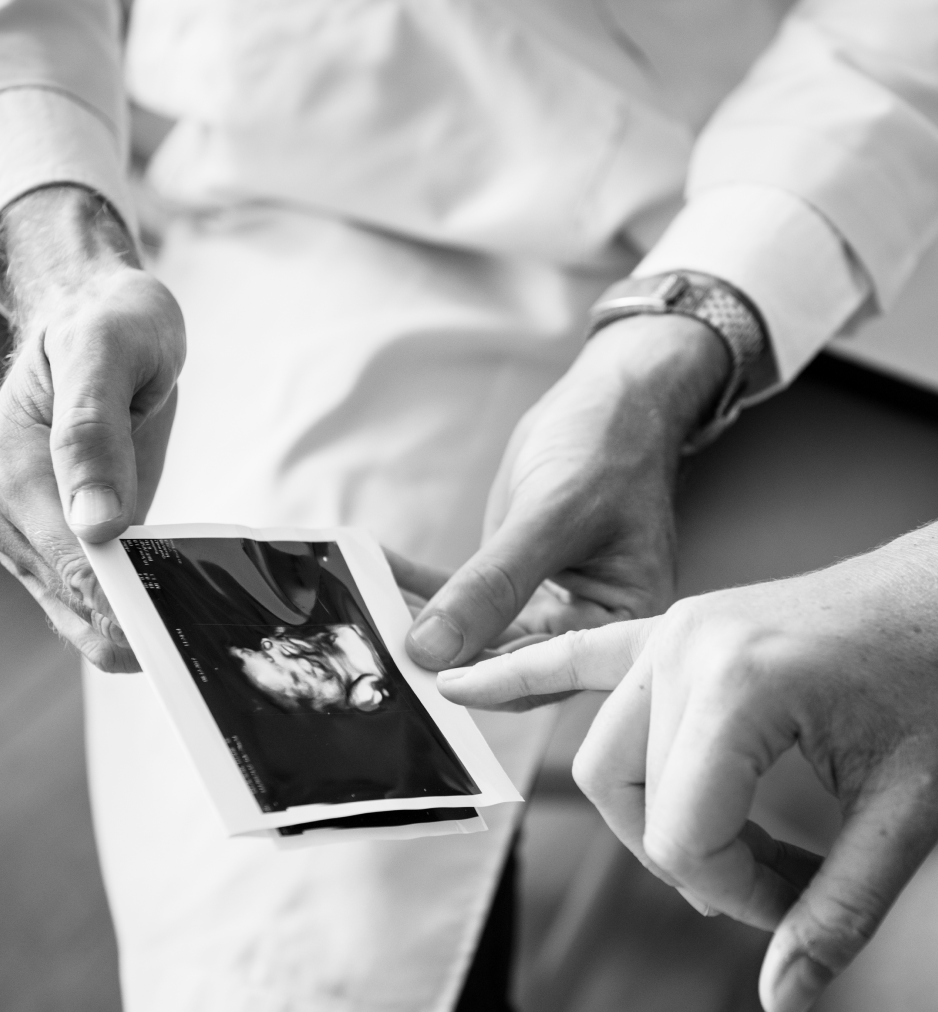Success Rates
Our outstanding Success Rates
Number of Live births in fresh + frozen embryo transfers for patients in different age groups

Since more than two-thirds of all of SGRH’s IVF cycles are now performed by frozen single embryo transfers following culture to the blastocyst stage, we present our success rates as cumulative live birth rates i.e. fresh plus frozen embryo transfer success rates in different age groups to help you understand your true chances for success and having a baby here at IVF Sir Ganga Ram Hospital. Our cumulative pregnancy and live birth rates per cycle are amongst the highest in India and we are proud about the fact that our results rival the best IVF centres in the world and are roughly 1.5-fold higher than the UK and US national averages.
This is our cumulative live birth data (fresh + frozen embryo transfers) of patients who underwent an IVF-ICSI cycle in 2019.
Clinical Outcomes according to Age - 2019
Age (Years)
%
Different ways of measuring success
Success rates can be measured and reported in many different ways. Most centers report their success rates in terms of positive beta hCG results per embryo transfer. owever, this is not the most reliable form of reporting and can be quite misleading in most instances. It is important to know that achieving a positive beta hCG report is important to begin with, but it cannot be considered equivalent to achieving a live birth. This is because roughly 20 – 30% of all initial positive pregnancies may be lost subsequently, with majority losses occurring in the first trimester, and a small % in the 2nd and 3rd trimesters, depending on patient characteristics as well as individual laboratories.
Therefore, the true success rate for any IVF laboratory can only be determined by the measure of the number of eventual live births of healthy babies, a number which can be substantially lower than the projected positive beta hCG results.

Additionally, most success rates are reported per embryo transfer. However, this can also lead to a discrepancy since those patients who never reach the stage of embryo transfer are not accounted for when success is measured in terms of only embryo transfers performed.
It should be noted that there will always be some patients (advanced age and very low ovarian reserves) who may not have embryos available at the end of their cycle and hence may never have an embryo transfer.
What Factors to Consider while
Choosing an IVF Clinic?
Experience
Our team of IVF clinicians is led by our medical director Dr. Abha Majumdar, the team features leading infertility specialists in the field of reproductive medicine and have many years of clinical IVF experience. Our embryologists are specialists in the field and our nurses have years of experience in IVF and associated treatments. Our laboratories are manned by a team of 4 full-time embryologists. Other laboratories which are manned only by visiting embryologists do not provide full time care and services, whereas IVS serves you 24×7 throughout the year. We provide special care for expecting parents, which can not be provided by embryologists visiting merely for a couple of days in a month.Access to Latest Technology and Culture of Innovation
IVF Sir Ganga Ram Hospital has always been at the forefront of all technological advancements in the field of fertility, be it techniques like Preimplantation Genetic Testing or Oocyte freezing in the lab or adopting new clinical protocols like Duo-Stim for poor responders or application of techniques like Endometrial Receptivity Array (ERA) for the management of repeated implantation failures. We are in constant pursuit of new techniques and advances in the embryology laboratory and new treatment protocols on the clinical side to improve your chances of achieving pregnancy.The Embryology Laboratory: The Real Key to Success
A lot of you who have had multiple IVF failures and are coming to us for the first time, want to know what new things we can offer. Most of you have heard of or even already used numerous modalities like embryo glue, assisted hatching, sequential transfer of multiple embryos in the same cycle, use of PRP, IV immunoglobulins or GSF in a bid to improve your chances, but have somehow not succeeded. Our laboratory makes the real difference between success and failure in IVF. It is a high-quality embryology laboratory, which can make embryos of the highest possible quality, that really works, rather than any of the above modalities. The laboratory perhaps constitutes the main difference between IVF centers and is thus one of the most crucial factors that needs to be considered while choosing an IVF center as it will be the difference between your chances of having a success or not.A highly successful Single Embryo Transfer Program
The average number of embryos that any laboratory transfers is a good reflection of the lab’s quality. Generally, IVF labs tend to transfer multiple embryos (3 or more) together in order to boost the chances of pregnancy. However, the flip side of doing so are a lot of twin and triplet pregnancies which unfortunately, for many, can create a lot of complications. Often these multiple pregnancies may result in preterm deliveries, low birth weights, neonatal ICU admissions etc which can be extremely undesirable for the couple.Only a few laboratories in the world, that are really very good, are able to transfer single embryos and still achieve high success rates. At SGRH IVF, 70% of our transfers are single embryo transfers, a feat which is unparalleled in the country. Also, as a rule, we never transfer 3 embryos together. This has dramatically reduced our number of twin pregnancies and related complications. Another huge advantage of transferring fewer or single embryos per cycle is that the majority of our patients who have multiple embryos, get multiple embryo transfer attempts at pregnancy without having to repeat their IVF stimulation cycles.
Average or poor labs which are not confident about the embryo quality and have poor implantation rates per embryo, tend to transfer 3 or 4 embryos. It is important for you to know that in all top laboratories around the world, it is normal to transfer 1 embryo at the blastocyst stage on day 5 or day 6 embryo or a maximum of two embryos on day 3. When multiple embryos are transferred (like 3 or even 4), it can be inferred that either the embryo quality is poor, or implantation rates of that particular lab are not very high.
